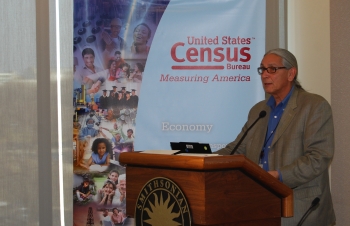U.S. Launches Interactive HIV/AIDS Database on Census.gov
The U.S. Census Bureau today launched an interactive global resource on the prevalence of HIV infection and AIDS cases and deaths. The database was developed in 1987 and now holds 149,000 statistics, an increase of approximately 10,800 new estimates in the last year, making it the most complete of its kind in the world. The launch comes as thousands of people worldwide meet in Washington, D.C., for the International AIDS Conference this week.
The resource is maintained by the Census Bureau with funding from the U.S. President's Emergency Plan for AIDS Relief (PEPFAR) through the United States Agency for International Development (USAID).
U.S. Global AIDS Coordinator Ambassador Eric Goosby, head of PEPFAR, said on the launch, “This release of the HIV/AIDS database will expand global access to data that are critical to understanding the epidemic. This information is invaluable for the evidence-based response PEPFAR is championing.”
Census Bureau Director Robert Groves said “This database provides the people who need it with quality statistics — supporting the life-saving efforts of our partners at PEPFAR and USAID and the doctors, nurses and public health officials working to reach the end of AIDS.”











